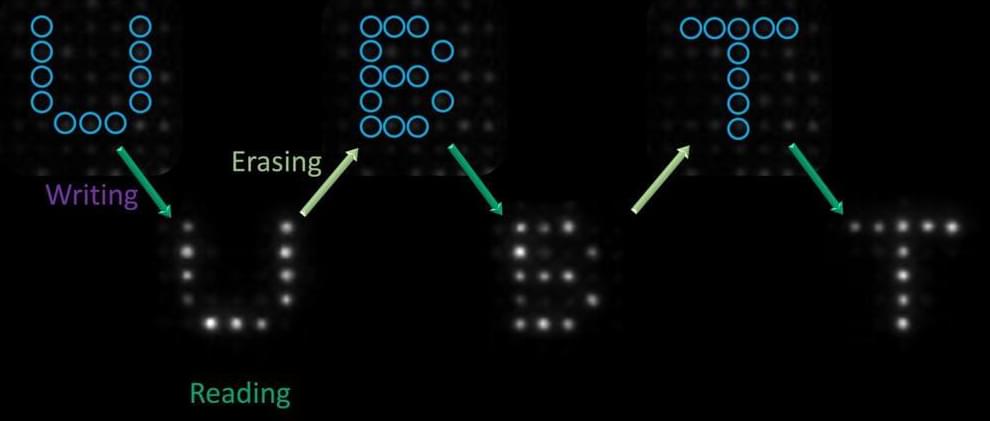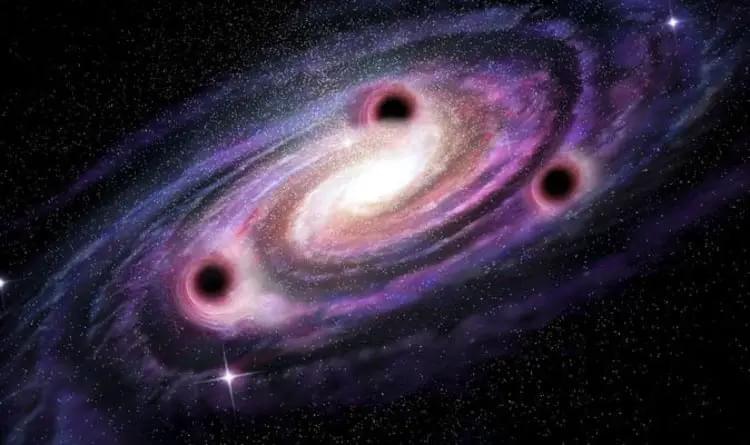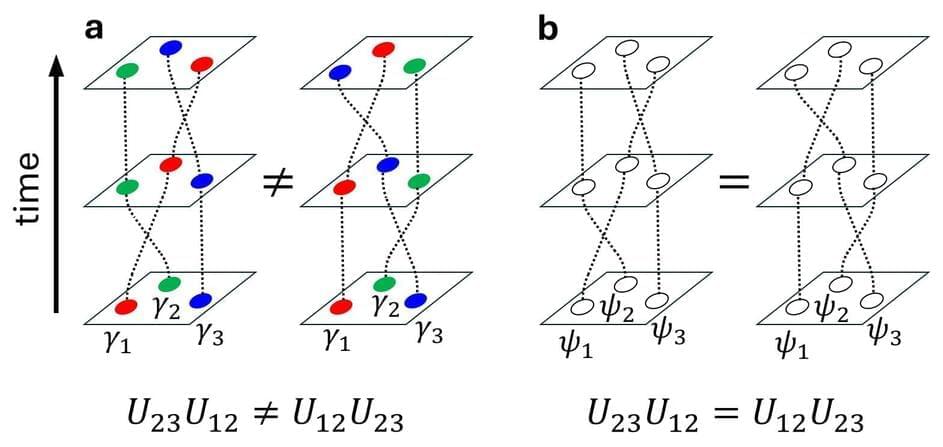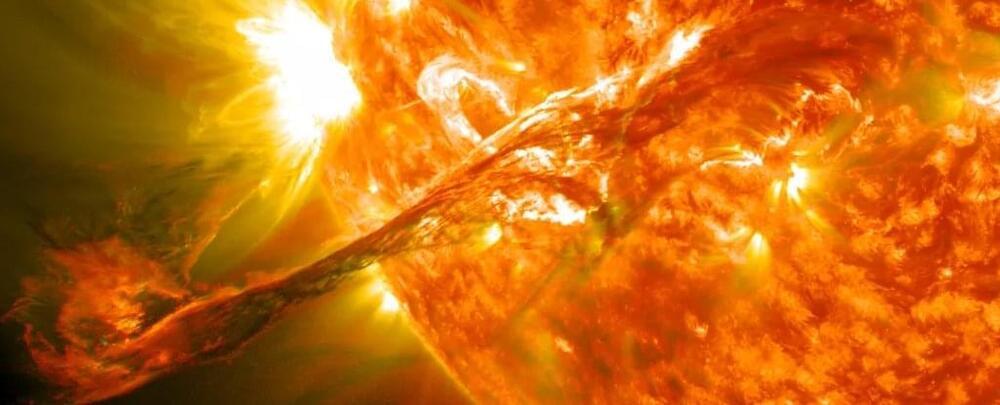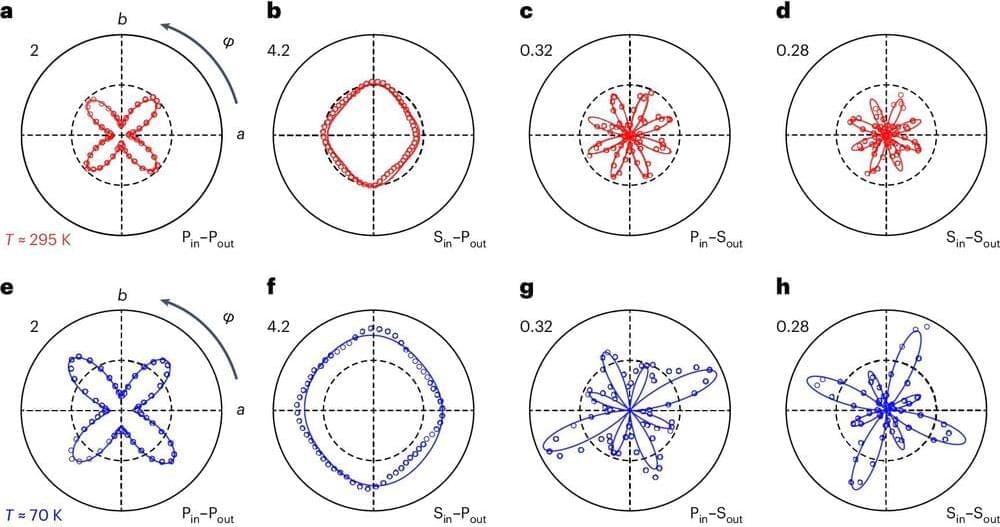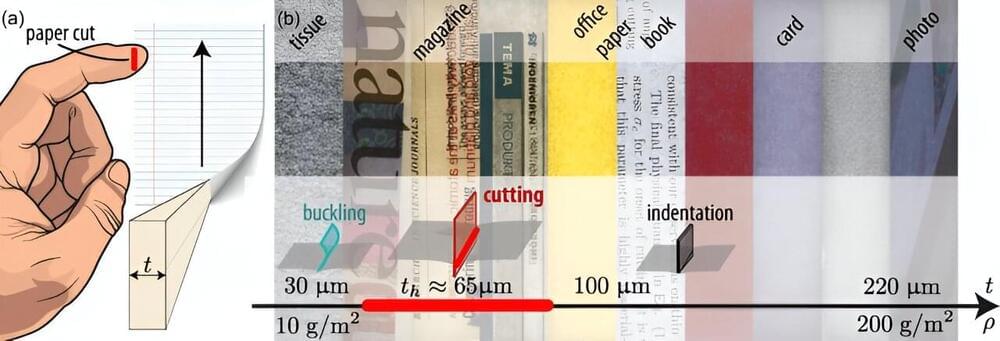In a collaboration between scientists from Physics and Chemistry at the University of Bayreuth and Physical Chemistry at the University of Melbourne, it has now been possible to realize optically switchable photonic units that enable precise addressing of individual units. This will make it possible to reliably store and read binary information optically.
Category: physics – Page 47
In the study, an international team of astronomers identified three supermassive black holes lurking near the center of galaxy NGC 6,240, which has been visibly disturbed by the gravitational effects of a triple merger. Because NGC 6,240 is so close—just 300 million light-years away—astronomers had previously assumed that its odd shape was the product of a typical merger between two galaxies. They believed that these two galaxies collided as they increased to hundreds of miles per second, and that they are still combining. Therefore, the researchers expected to find two supermassive black holes hiding near the center of the cosmic collision.
Instead, the team discovered three supermassive black holes, each weighing more than 90 million Suns, when they used 3D mapping techniques to peer into the core of NGC 6240. (To put this into perspective, Sagittarius A*, the supermassive black hole at the center of the Milky Way, is roughly 4 million solar masses in weight.) Furthermore, the three massive black holes of NGC 6,240 are confined to an area that is less than 3,000 light-years across, or less than 1% of the galaxy in which they are found.
“Up until now, such a concentration of three supermassive black holes had never been discovered in the universe,” said study co-author Peter Weilbacher of the Leibniz Institute for Astrophysics Potsdam in a press release. This is the first time that scientists have seen a group of supermassive black holes packed into such a small area, despite the fact that they have previously discovered three distinct galaxies and the black holes that are connected to them on a collision course.
The standard model of the universe relies on just six numbers. Using a new approach powered by artificial intelligence, researchers at the Flatiron Institute and their colleagues extracted information hidden in the distribution of galaxies to estimate the values of five of these so-called cosmological parameters with incredible precision.
A collaborative research team has identified the world’s first multiple Majorana zero modes (MZMs) in a single vortex of the superconducting topological crystalline insulator SnTe and exploited crystal symmetry to control the coupling between the MZMs.
The results were a significant improvement over the values produced by previous methods.
From the article:
When Saha and Sinha took a closer look at the resulting equations, they realized that they could express the number pi in this way, as well as the zeta function, which is the heart of the Riemann conjecture, one of the greatest unsolved mysteries in mathematics.
Two physicists have come across infinitely many novel equations for pi while trying to develop a unifying theory of the fundamental forces.
The number pi (π) appears in the most unlikely places. It can be found in circles, of course—as well as in pendulums, springs and river bends. This everyday number is linked to transcendental mysteries. It has inspired Shakespearean thought puzzles, baking challenges and even an original song. And pi keeps the surprises coming—most recently in January 2024, when physicists Arnab Priya Saha and Aninda Sinha of the Indian Institute of Science presented a completely new formula for calculating it, which they later published in Physical Review Letters.
In a paper published recently in the Journal of Applied Physics, an international team of scientists from Lawrence Livermore National Laboratory (LLNL), Argonne National Laboratory and Deutsches Elektronen-Synchrotron have developed a new sample configuration that improves the reliability of equation of state measurements in a pressure regime not previously achievable in the diamond anvil cell.
From afar, the Sun looks calm and peaceful in our daytime skies. But up close, it’s an erupting, chaotic display of solar activity the likes of which astrophysicists didn’t expect until the last year or so.
“We didn’t think the Sun was going to be as active this particular cycle, but the observations are completely opposite,” Andrew Gerrard, the department chair and director of the Center for Solar-Terrestrial Research at New Jersey Institute of Technology, told Business Insider.
Solar cycles typically occur every 11 years. Within that time, the Sun oscillates from minimum to maximum solar activity, with maximum activity peaking in the middle of the cycle when the Sun’s magnetic fields flip.
Materials that exhibit superconducting properties at high temperatures, known as high-temperature superconductors, have been the focus of numerous recent studies, as they can be used to develop new technologies that perform well at higher temperatures. Although high-temperature superconductivity has been widely investigated, its underlying physics is not yet fully understood.
Via testing with a skin stand-in, a trio of physicists at Technical University of Denmark has ranked the types of paper that are the most likely to cause a paper cut. In an article published in Physical Review E, Sif Fink Arnbjerg-Nielsen, Matthew Biviano and Kaare Jensen tested the cutting ability and circumstances involved in paper cuts to compile their rankings.
